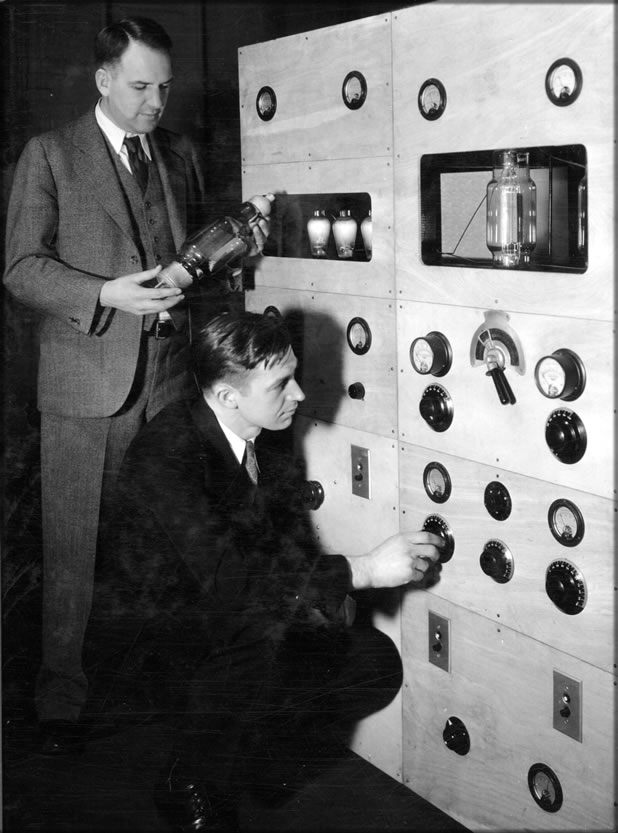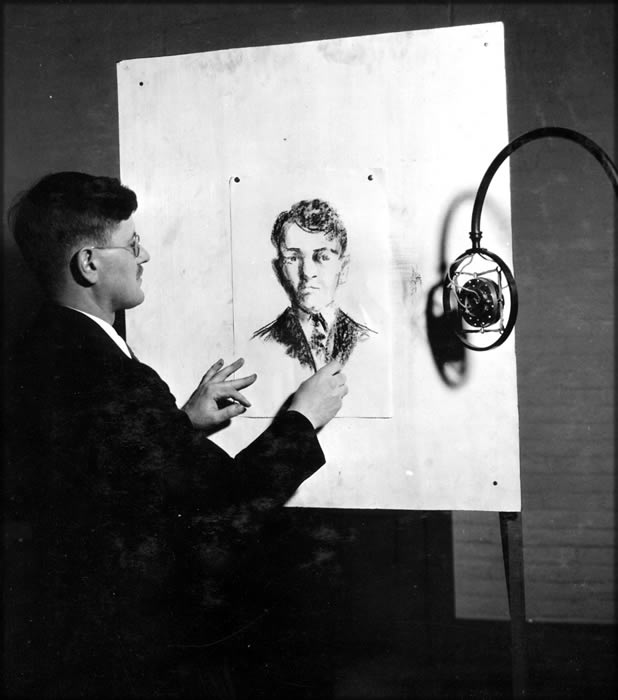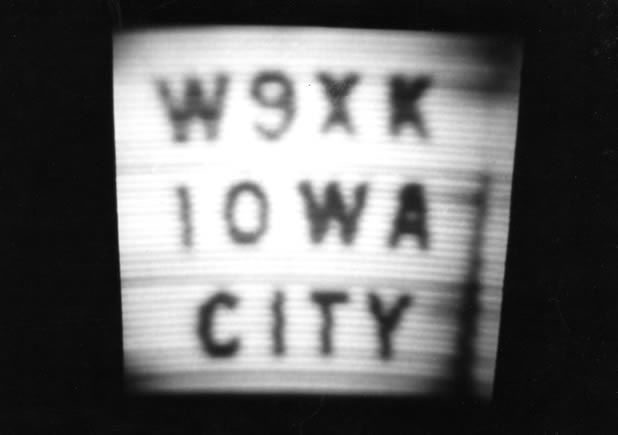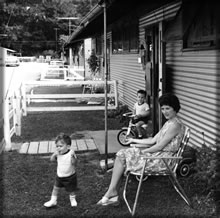-
Page Navigation Links:
- Skip to Site Navigation Links
- Skip to Features

- The University of Iowa
- Spectator
- Monthly News for UI Alumni and Friends

Prime-time TV in America didn’t start in a laboratory at General Electric, RCA, or AT&T, but instead at the northeast corner of Dubuque Street and Iowa Avenue in Iowa City. W9XK, The University of Iowa’s experimental television station, went on the air Jan. 25, 1933, with a weekly or twice-weekly schedule of lectures, music, and drama. It was the first educational TV station in the U.S.
Nationally about 30 experimental TV stations were broadcasting test signals in the early 1930s. Only W9XK, however, aired programs regularly, attracting a small but loyal audience. Viewers from as far away as Oklahoma and Pennsylvania reported receiving the signal.
E.B. Kurtz, head of the UI Department of Electrical Engineering, Carl Menzer, manager of WSUI radio, and Clement F. Wade, a 1913 UI College of Law graduate and president of the Chicago-based Western Television Corporation, launched the project. Telecasts originated from the electrical engineering building two blocks east of Old Capitol, at the site of the present-day Biology Building East. Programs included lectures on such varied topics as oral hygiene, identifying trees, and charcoal sketching. Faculty and students from across the campus participated.
The video portion of the broadcasts was delivered via short-wave frequency 2050 kHz, while sound was provided by WSUI radio. The W9XK experiment ended in 1939, when the station’s mechanical-disk system of transmission became obsolete, succeeded by an electronic system largely in use today. Another experimental station, W9XUI, operated briefly as a closed-circuit (non-broadcast) service during 1940-41. Though the University was granted a license to operate W9XUI using the new electronic standard, it never built a transmitter for that purpose.
To access an online digital collection featuring over 100 items, including photographs, correspondence, and articles chronicling W9XK’s brief but significant history, visit http://digital.lib.uiowa.edu/w9xk. Materials are from the University of Iowa Archives, Department of Special Collections. No video or film footage of W9XK’s broadcasts is known to exist today.
—David McCartney, University Archivist

E.B. Kurtz and J.L. Potter in front of television transmitter, The University of Iowa, 1933
(Source—University Archives, Department of Special Collections, F.W. Kent Photographs Collection, (RG 30.01.01), Events and Activities series, Television folder)

Art instructor Aden Arnold of the Plastic and Graphics Arts Department sketches a portrait during his lecture on W9XK television, The University of Iowa, 1933
(Source—University Archives, Department of Special Collections, F.W. Kent Photographs Collection, (RG 30.01.01), Events and Activities series, Television folder)

Television station call letters, The University of Iowa, 1930s
(Source—University Archives, Department of Special Collections, F.W. Kent Photographs Collection, (RG 30.01.01), Events and Activities series, Television folder)
NEXT MONTH:
Barracks on campus:
Not much, but it’s home
If you’ve got memories to share, please send them to Spectator@IOWA and we’ll run some next month.

(Source—F.W. Kent Photographs Collection (RG 30.01.01), Building series, Married Housing folder)
Previous Old Gold editions:
© The University of Iowa 2009